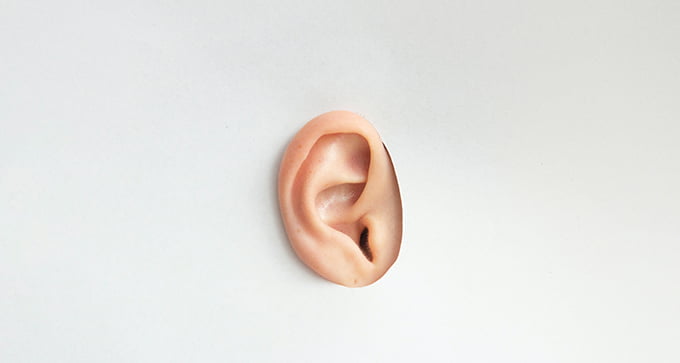An effective ear training exercise need not be dry or dull. It doesn’t need to take up a ton of lesson time, either. If you’re on the hunt for a new ear training exercise for your piano students, this step-by-step activity is perfect for you.

⬆️ Listen to the podcast above or keep on reading, whichever fits your style. ↙️
Any approach to ear training for piano students should be iterative, and the steps in this exercise fit the bill perfectly.
Each stage builds on the previous one. Stick to each stage for several weeks until your student has gotten plenty of practice and immersion before moving to the next stage.
If you approach it with a playful attitude, the process described in this post will feel like a game to your student. So spend just 3 minutes in each lesson on this ear training exercise and marvel at the massive difference you see over time.
I’ll describe each of the stages below in the context of a one-on-one lesson. However, I do this with 2 students in my buddy lessons and it works very well. If you teach buddy or partner lessons, just replace yourself with the second student.
Aural Skills Activity Stage 1: 3 Black Keys
The first stage of this ear training exercise is very simple. You’ve probably even done this before.
- Ask your student to put fingers 2, 3 and 4 on the 3 black keys
- You do the same
- Play a short pattern and ask your student to echo it
- Ask them to play a short pattern for you to echo
- Rinse and repeat

No, this is not revolutionary. But many teachers stop right here, and in this article we’re going to take it much further.
For more ideas about incorporating ear training into your lessons, check out these articles on my Music Theory Page.
Aural Skills Activity Stage 2: Do Re Mi all over
The aural skills required for this stage are the same as stage 1. The difference is that we’re leaving the key of G flat and exploring other keys.
Play it
Nothing too wild here! Start off in the key of C and repeat the echo exercise described above. Over the next week or two, try the keys of F and G.
Week 3 or 4 is where it gets interesting for the student.
- Ask them to pick any note to be do
- Tell them to try to find the right re and mi from there
- Give them hints if they get stuck
- Do a couple of echoes in the new key
- Choose a new do and repeat
Working in this way, students start to intuitively understand the nature of movable do solfa. They also get a sense of scales and keys at a basic level.
Label it
Up to this point, you might have referred to some solfa syllables but you haven’t required students to label the notes in this way. It’s time for them to translate their patterns into solfa so they can adapt to this new environment.
- Have your student choose a do and then find re and mi as usual
- Play a pattern for them to echo
- Ask them to tell you what the pattern was in solfa
- Get them to play a short pattern for you to echo
- Ask them what that pattern was in solfa
Make this solfa-labelling step part of your overall ear training routine from here on.

Sing it
After several weeks of this immersion in do re mi patterns on the keys, your student is ready to make some patterns with their voice.
- Sing a do re mi pattern with while doing the Curwen hand signs
- Tell your student to sing and sign back to you
- Ask them to make up their own pattern for you to echo back
As you repeat this process, change the key every so often by playing a tonic chord and new do on the piano. This will keep things fresh for you and your student.
Aural Skills Activity Stage 3: Do Re Mi So
After all that practice, you’re ready to add another note.
You might be tempted to go for fa since it’s next in the scale but I recommend so, as this will be an easier transition for your students. We’ll get to fa in stage 4.
Play it & Label it
Your students will be most comfortable on the keys so always start with echoes on the piano.
- Have them choose a do re mi pattern
- Help them find the new note so
- Play a pattern for them to echo
- Ask them to tell you what the pattern was in solfa
- Get them to play a short pattern for you to echo
- Ask them what that pattern was in solfa
They should be used to this process by now, so it should go as smoothly as olive oil on a hot pan. 🍳
Sing it
After a couple of weeks of practice with do re mi so patterns, it’s time to sing.
- Sing a do re mi so pattern with while doing the Curwen hand signs
- Tell your student to sing and sign back to you
- Ask them to make up their own pattern for you to echo back

As you repeat this process, change the key every so often by playing a tonic chord and new do on the piano. This will keep things fresh for you and your student.
Aural Skills Activity Stage 4: Do Re Mi Fa So
You don’t need me to explain all the steps within this stage – you’re a pro by now!
Introduce your students to fa on the piano first and try it in lots of different keys. Then progress to singing full pentascale solfa patterns when your student is ready.
Your students will love doing this ear training exercise as it provides a fun level of challenge. And you’ll love the confidence it gives them with aural work.
Get Comfy and Cosy with Solfa
If you’re curious about using more solfa in your lessons, the Solfa Skyrocket course from the Vibrant Music Teaching Library provides a great framework. You don’t need any special Kodály qualifications. Just follow the step-by-step plans and grow your confidence gradually.
How often do you do ear training in your piano lessons?
Do you do it every week, or just squeeze it in whenever you have spare time? Let us know in the comments.
